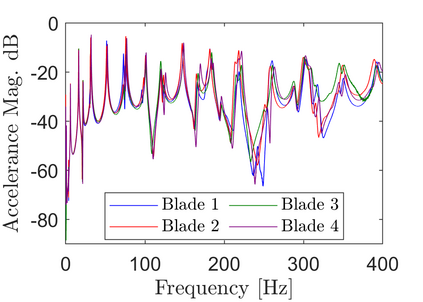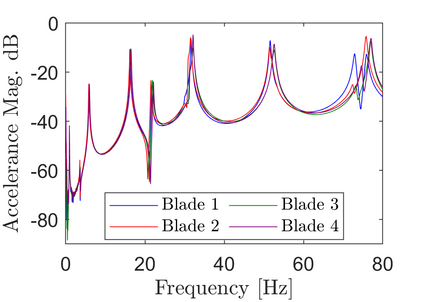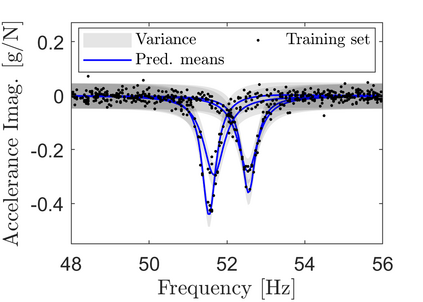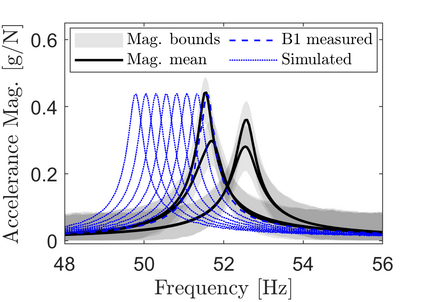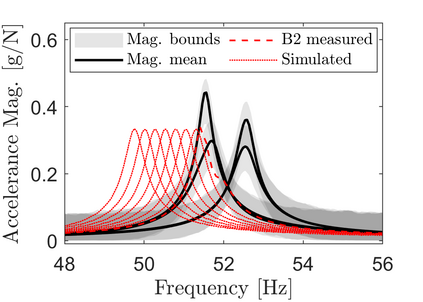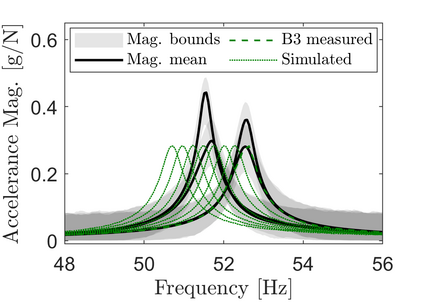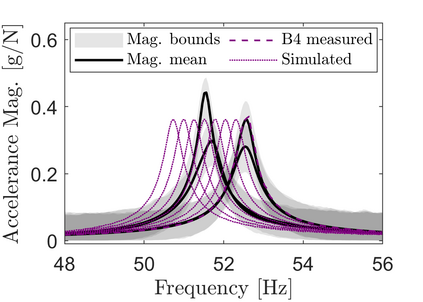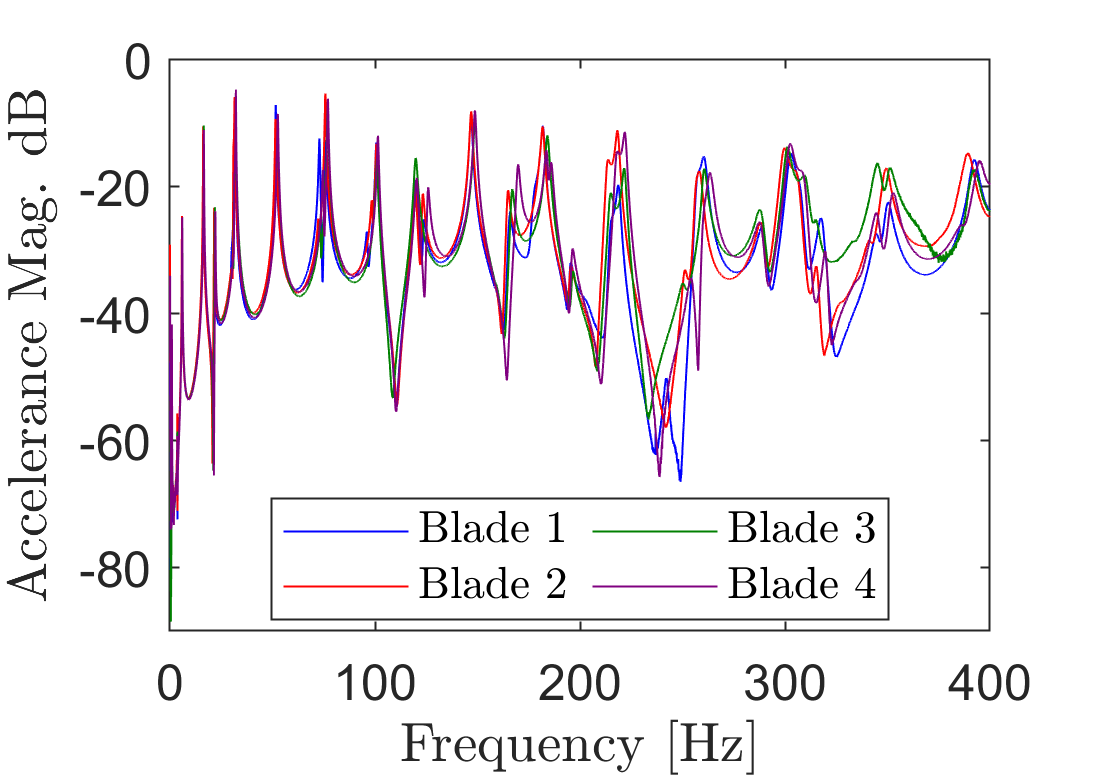Reductions in natural frequency are often used as a damage indicator for structural health monitoring (SHM) purposes. However, fluctuations in operational and environmental conditions, changes in boundary conditions, and slight differences among nominally-identical structures can also affect stiffness, producing frequency changes that mimic or mask damage. This variability has limited the practical implementation and generalisation of SHM technologies. The aim of this work is to investigate the effects of normal variation, and to identify methods that account for the resulting uncertainty. This work considers vibration data collected from a set of four healthy full-scale composite helicopter blades. The blades were nominally-identical but distinct, and slight differences in material properties and geometry among the blades caused significant variability in the frequency response functions, which presented as four separate trajectories across the input space. In this paper, an overlapping mixture of Gaussian processes (OMGP), was used to generate labels and quantify the uncertainty of normal-condition frequency response data from the helicopter blades. Using a population-based approach, the OMGP model provided a generic representation, called a form, to characterise the normal condition of the blades. Additional simulated data were then compared against the form and evaluated for damage using a marginal-likelihood novelty index.
翻译:自然频率的减少往往被用作结构性健康监测(SHM)的损害指标,然而,操作和环境条件的波动、边界条件的变化以及名义上的同质结构之间的微小差异也会影响僵化,产生模仿损害或遮盖损害的频率变化。这种变化限制了SHM技术的实际实施和普及。这项工作的目的是调查正常变异的影响,并确定由此产生的不确定性的计算方法。这项工作考虑了从一套四套健康的全尺寸复合直升机刀片中收集的振动数据。刀片名义上与众不同,物质性质和形状略有差异,导致频率反应功能的显著变化,而频率反应功能是作为四个单独的轨道在投入空间上显示的。在本文件中,高斯工艺的重叠混合物(OMGP)被用来制作标签,并量化直升机刀片中正常条件频率反应数据的不确定性。采用基于人口的方法,OMGP模型提供了一种通用表示法,称为一种形式,使刀片的正常状态与边缘性指数形成特征。另外,用新的模型比较了刀片状。

